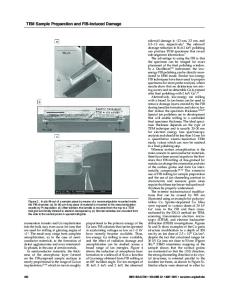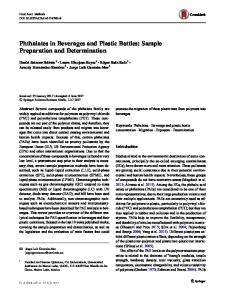Preparation, microstructure, and microhardness of selective laser-melted W–3Ta sample
- PDF / 1,063,123 Bytes
- 9 Pages / 584.957 x 782.986 pts Page_size
- 103 Downloads / 899 Views
FOCUS ISSUE
ADDITIVE MANUFACTURING OF METALS: COMPLEX MICROSTRUCTURES AND ARCHITECTURE DESIGN
Preparation, microstructure, and microhardness of selective laser-melted W–3Ta sample Junfeng Li1,a), Zhengying Wei1, Bokang Zhou1, Yunxiao Wu1, Sheng-Gui Chen2, Zhenzhong Sun2 1
State Key Laboratory for Manufacturing Systems Engineering, Xi’an Jiaotong University, Xi’an 710049, China School of Mechanical Engineering, Dongguan University of Technology, Dongguan 523808, China a) Address all correspondence to this author. e-mail: [email protected] 2
Received: 30 December 2019; accepted: 10 March 2020
Tungsten (W) alloy is of difficulty in processing for conventional way because of its high melting point. Here, W alloy sample with the addition of 3 wt% Ta was prepared by selective laser melting. The influence of volumetric energy density (VED) on the surface morphology and the relative density was discussed, and microstructure, phase composition, and microhardness were investigated. The results show that a smooth surface and high relative density (95.79%) can be obtained under optimal VED. The W–Ta substitutional solid solution formed because of the replacement of Ta atom. There are strip and block fine grains in the W–3Ta sample with no significant texture. In addition, subgrain structure with a size of around 1 lm formed inside the strip grain, owing to the large thermal gradient and extremely fast cooling rate. Finally, the W–3Ta alloy shows higher microhardness than that obtained by traditional methods.
Introduction Tungsten (W) and its alloy have been widely used in many fields including aerospace, marine, machinery, electrical appliances, and instruments because of its advantages of high density, high strength, excellent thermal conductivity, and low thermal expansion coefficient and corrosion resistance. They are also considered to be the most promising candidate plasma-facing material in the future fusion reactors because of their characteristics of low sputter erosion and low tritium retention/co-deposition [1, 2]. To date, tungsten and its alloy generally processed by the powder metallurgy, which is tedious and time-consuming [3, 4]. Besides, it is of difficulty for conventional way to fabricate the complex parts. Selective laser melting (SLM), which is one of metal additive manufacturing technologies, is a promising technology which can realize the integrated manufacturing of very complex structural components. In the SLM process, it uses high energy laser beam to melt the metallic powder layer by layer according to the computer aided design (CAD) data of parts. In recent years, the SLM technology has attracted much attention from researchers and has been used in the fabrication of many kinds of material such as Al-based alloy, Ti-based alloy,
ª Materials Research Society 2020
Ni-based alloy, and Fe-based alloy [5]. All the above materials prepared by SLM have shown good performance and have been applied in some fields [6]. Therefore, the preparation of refractory metals such as molybdenum (Mo), tantalum (T
Data Loading...











